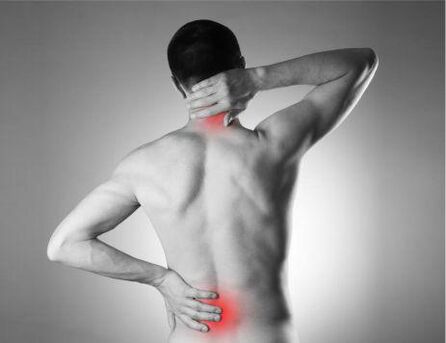With osteochondrosis, the structure and function of intervertebral discs are impaired, which provide the spine flexibility and mobility.As the disease intensifies, irreversible changes arise in the vertebrae itself.

The causes of osteochondrosis are internal (endogenous) and external (exogenous).
Endogenous motives include:
- Infringement of intrauterine development of the spine,
- Hereditary predisposition and age -related changes in cartilage.
The main exogenous cause of osteochondrosis is the inadequate distribution of the load in the spine, which leads to a change in cartilage in the places of over pressure.
Provoke the disease:
- Column trauma,
- Infections,
- Weakened back muscles,
- Side and side s curvature of the spine,
- Drug weights
- A long retention of an uncomfortable posture.
Osteochondrosis can develop not only in people with an inadequate posture involved in mental work, but also those that are physically trained.
In addition to the mechanical reasons for the development of osteochondrosis, they also lead to:
- Metabolic disorders (mainly calcium and phosphorus),
- Lack of traces of elements and vitamins (magnesium, manganese, zinc, vitamin D),
- The hereditary predisposition plays a very large role.
When lifting weights, jumps, falls, static loads, micro intervertebral discs appear.If this happens systematically, damaged intervertebral discs lose their elastic properties over time, flatten and the distance between the vertebrae decreases.And that means that the nerve roots that extend from the spinal cord are stuck, the pain occurs.At the same time, the swelling appears in the neuro-vascular package clip, which leads to even greater violation and increased pain.If the intervertebral disc has already begun to collapse, it stops amortizing even more and gradually the spine loses its flexibility.
The main sign of osteochondrosis is pain.Depending on where damaged intervertebral discs are located, they can hurt: neck, shoulder, arm, back and even a chest.Sometimes a person thinks he has heart problems, but in fact this is a compressed nerve as a result of osteochondrosis.Simultaneously with pain, a person usually feels overwhelmed and numbness of the muscles.If the blood vessels that feed the brain are squeezed, a headache, dizziness, noise in the ears, double eyes, nausea and vomiting, fainting.
You need to contact these complaints to the neurologist.It will examine the spine of the spine, check how things are with brain circulation and, if necessary
Treatment of osteochondrosis is a long process that requires a person with great willpower and free time.To date, there are many methods to combat the disease: medicine, manual therapy, traction, massage and therapeutic gymnastics.
Tips for preventing radiculitis and osteochondrosis:
- Oporttoless correction of curvature the spinal disorders and school -age posture.
- It is actively involved in Physical Education, which will allow you to form a muscle corset.
- Adheiving to a diet, consuming products with sufficient content of vitamins, calcium and magnesium (fish and other sea gifts, cabbage, spinach, beans, walnuts, seeds, peas, thick bread and fresh milk).
- Fight for overweight.
- When loading weights, make sure the uniform load on both hands using backpacks instead of bags.Lift the weights only with the use of legs, not the spine.


















